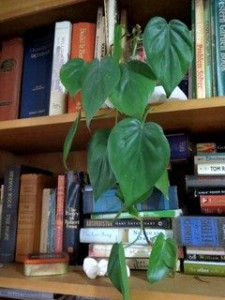Life is not quite settled at the new abode, but I can already feel that the change will be good.
The paint is fresh. One truckload for donations, another truckload to the dump. I dusted each old household item before it entered the new house. How could this be anything but “cleansing”?
My move was 15 feet to the north, to the one-bedroom house next door to where I have lived for 18 years.
Believe me, mopping up after all those years was a chore, but I wanted to leave it as clean as was Heatherly possible.
A nice person will soon be living in close proximity. I don’t want her shaking her finger in my direction if she discovers a dirty plastic fork at the back of the storage closet.
Sigh.
Letting go of “my garden” was heart-wrenching. I planted that lemon verbena and watched the needle-nosed ivy inch across the cinder block wall. I was the witness as the almond tree grew tired. Many of my best cries were under the shade of the maple.
It’s funny how there can be memories wrapped up in an aged sage plant, which bloomed every spring with light purple flowers. Now the plant is near its end, with a “trunk” as gnarled the base of a seaside cypress tree.
When you move, you are forced to let things go.
Perhaps I could move the roses? Yet, they would never be as vibrant if I tortured their roots.
My best friend gifted me the yellow rose 17 years ago, when I was the birthing coach for my godson. I’ll ask the new tenant if I can take cuttings in the fall.
As life’s plans often turn, I had been planning for a move for the past two years. However, I had hoped to be a homeowner right now.
This just hasn’t panned out.
For those two years I tucked new plants into pots, creating a long line of greenery that began at my (old) front porch and stretched along the side of the (old) house.
Those plants, like me, had been in limbo.
Now that line of plants is waiting to be arranged at the new house.
Shopping list
For some selfish, miserly reason, I had the thought of digging up all the bulbs in my old yard. In fact, when they bloomed last spring I marked each flower with a little plastic flag.
These are daffodils. Daffodils need to be divided. By taking every last bulb from the yard, and leaving mounds of overturned earth, I would actually be doing the daffodils a service.
Alas, after cleaning (her) house, moving my stuff, cleaning my stuff, and partially unpacking my stuff, I ran out of vigor.
Daffodils are sold in bags of 40 at my nearby big-box store. Why not start completely fresh?
Of course, I’ll let the new gal know of my generosity, because I’m going to hit her up for some of (my) purple irises this fall.
New life, new neighbor
I was still a bit nervous about the new neighbor. Will we be friends? Will she get a yappy dog? Or four yappy dogs?
When the Russian dancers break plates at my wild parties, will she call the police?
Somewhere in the middle of these thoughts, I was able to take a deep breath.
My garden is where I let my mind clear, look for hidden insects and allow clarity to seep in.
I decided to take one more tour around the yard that I knew so well.
As I turned the corner I saw that the new neighbor had started her move-in process. There, shaded by (my) old walnut tree were about 70 pots — greenery and flowers, succulents and cuttings from her previous yard. These pots had recently been on her (old) front porch, and overflowing along the side of her (old) house.
She’ll be happy on her new little slice of earth.
I think things will turn out just fine.

